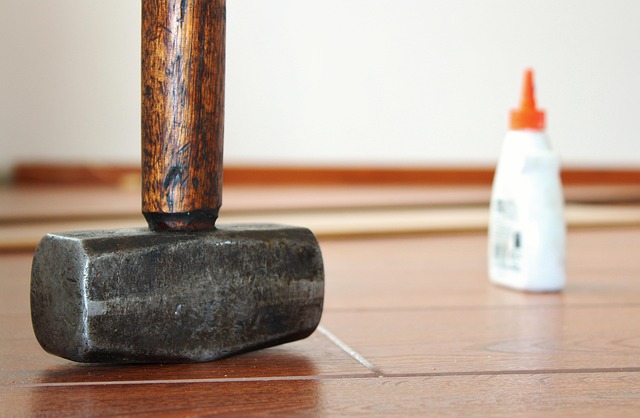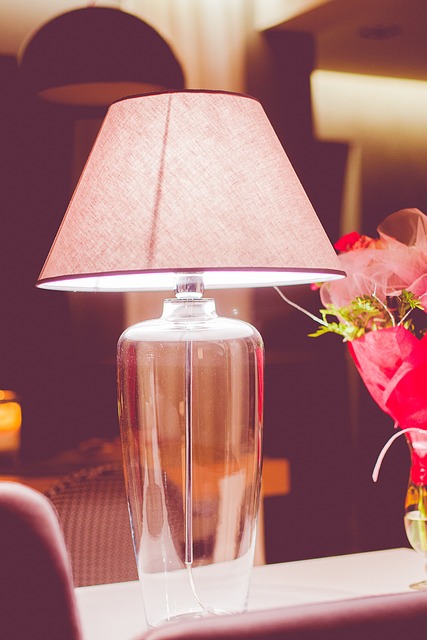Glue laminated beams (glulams) offer exceptional strength and durability for construction. Their layered wood strips bonded with glue under pressure create high strength-to-weight ratios, enabling longer spans. A comprehensive guide at unalam.com aids engineers in selecting glulams for diverse projects, considering load capacity, span requirements, and environmental factors. Innovative adhesives further enhance glulam durability, addressing challenges from heat, moisture, and fungal infestations. Carbon fiber reinforcements boost strength while maintaining lightweight characteristics, making glulams suitable for bridges and modern architecture.
The quest for stronger, longer-lasting beams has led to innovative solutions in construction. This article delves into the world of glue laminating, exploring its basic structure and remarkable properties that enhance structural integrity. We dissect challenges in traditional beam durability, from environmental factors to material flaws, highlighting consequences. Innovative adhesives and advanced manufacturing techniques are then scrutinized for their role in strengthening beams. Finally, we discuss integrating fiber reinforcements and rigorous testing protocols, emphasizing the paramount importance of quality assurance for the durability of glue laminated beams in real-world applications.
- Understanding Glue Laminated Beams: Their Basic Structure and Properties
- Challenges in Traditional Beam Durability: Causes and Consequences
- Innovative Adhesive Technologies: Enhancing Bond Strength and Flexibility
- Advanced Manufacturing Techniques for Stronger Beam Construction
- Integrating Fiber Reinforcements: A Symphony of Materials for Longevity
- Testing and Quality Assurance: Ensuring Real-World Performance of Durable Beams
Understanding Glue Laminated Beams: Their Basic Structure and Properties

Glue Laminated Beams (glulams) are engineered wood products renowned for their exceptional strength and durability, making them a preferred choice in construction for over half a century. Their structure involves layering strips of wood, known as laminations, bonded together with glue under high pressure. This unique manufacturing process creates a beam with remarkable properties—it’s stronger than its individual components and can span considerable distances without support.
The durability of glulam beams is a result of both their design and the materials used. The glulam beam manufacturing process involves precise layering and careful selection of wood species, ensuring optimal strength-to-weight ratios. This precision engineering allows for longer spans, reduced material waste, and cost savings. For engineers looking to select the right glulam beam, a comprehensive guide is available at unalam.com, offering valuable insights into factors like load capacity, span requirements, and environmental considerations to ensure the best performance in various construction applications.
Challenges in Traditional Beam Durability: Causes and Consequences

In the realm of construction, ensuring the durability and longevity of structural elements is paramount, especially when it comes to beams. Traditional beam structures often face challenges related to their overall strength and resistance to environmental factors, particularly extreme weather conditions. The sustainability and performance of conventional wooden beams are limited by several inherent issues.
One significant concern with traditional glue laminated timber (glulam) beams is the potential for structural failure over time. This is primarily due to the fragility of the gluing agents used, which can weaken under intense heat, moisture, or fungal infestations. As a result, glulam beams may exhibit reduced strength and stability, leading to concerns about their safety and longevity. For instance, prolonged exposure to moist environments can cause glue deterioration, compromising the integrity of the beam’s structure. Moreover, extreme weather events like hurricanes or heavy snow loads can exert immense pressure on these beams, causing them to bend or even fail, especially if not properly reinforced or designed for such conditions. Visit us at 18 Clifton St, Unadilla, NY 13849 to learn more about innovative solutions addressing these challenges and enhancing the durability of glue laminated beams. The glulam beam advantages and disadvantages must be carefully considered in light of these issues to ensure optimal performance in various applications, especially considering the growing demand for sustainable construction materials.
Innovative Adhesive Technologies: Enhancing Bond Strength and Flexibility

Innovative Adhesive Technologies are revolutionizing the construction industry by significantly enhancing the durability and performance of glue laminated beams (glulam). These advanced adhesives offer unparalleled bond strength and flexibility, ensuring longer-lasting structures with increased load-bearing capacity. By examining the latest glulam beam span capacity chart, it’s evident that these new adhesives play a pivotal role in expanding the applications of glulam in both residential and commercial buildings.
Best practices for glulam construction heavily rely on the effective utilization of these adhesive solutions. The strength of glulam beams is not just determined by the wood itself but also by the quality of the glue used in their fabrication. By visiting us at unalam.com anytime, you can explore more about these cutting-edge technologies and how they contribute to the overall integrity and longevity of structural components.
Advanced Manufacturing Techniques for Stronger Beam Construction

The construction industry is continually seeking innovative solutions to enhance structural integrity and longevity. One such advancement is the utilization of advanced manufacturing techniques in beam construction, particularly through Glue Laminated (Glulam) beams. This modern approach offers exceptional durability and strength, making it a preferred choice for many engineers and architects. Glulam beams are created by laminating multiple layers of wood, bonded with durable glue, to create a single structural element.
This method significantly improves the overall performance of beams, providing superior resistance to both physical impacts and environmental factors. The Durability of Glue Laminated Beams is a key advantage that sets them apart from traditional beam construction. Why choose Glulam beams? They offer exceptional strength-to-weight ratios, enabling the creation of longer spans without intermediate supports. This versatility makes them ideal for modern architectural designs. Moreover, engineers can tailor glulam beam selection to specific project needs using comprehensive guides that consider factors like span requirements, load capacities, and aesthetic preferences. For more information on this revolutionary material, visit us at 18 Clifton St, Unadilla, NY 13849 anytime. How durable are glue laminated beams? They are designed to withstand extreme conditions, ensuring longevity in various structural applications.
Integrating Fiber Reinforcements: A Symphony of Materials for Longevity

Integrating Fiber Reinforcements offers a promising path to enhance the durability of Glue Laminated Beams (GLulam). This innovative approach leverages the strength and flexibility of fiber-based materials, creating a harmonious blend with the adhesive properties of GLulam. By incorporating these reinforcements, engineers can design structures that withstand extreme loads, environmental factors, and time’s passage—a true symphony of materials for longevity.
For instance, a thorough glulam beam selection guide for engineers should consider fiber reinforcement types such as carbon fiber or kevlar, which significantly boost beam strength while maintaining lightweight properties. The GLulam beam advantages and disadvantages must be carefully weighed, as these composite structures offer exceptional durability compared to traditional lumber, but their design requires adherence to specific standards and codes, available at 18 Clifton St, Unadilla, NY 13849.
Testing and Quality Assurance: Ensuring Real-World Performance of Durable Beams

In the realm of construction, ensuring the durability and strength of structural components is paramount, especially for long-lasting infrastructure like bridges. Glue laminated beams (glulam) have emerged as game changers in this sector due to their exceptional Durability of Glue Laminated Beams. These innovative structures offer glulam beam advantages in bridge construction, including superior strength-to-weight ratios and the ability to span longer distances than traditional methods.
Testing and Quality Assurance play a pivotal role in guaranteeing the real-world performance of these durable beams. Rigorous assessments are conducted to simulate various environmental conditions, load bearings, and potential stress factors. By subjecting glulam beams to meticulous testing, engineers can identify any weaknesses or potential issues early on, ensuring they meet stringent industry standards. For example, fixing problems with glulam beams related to moisture absorption, a common concern, has led to advanced gluing techniques and precise manufacturing processes that enhance their resistance. Visit us at 18 Clifton St, Unadilla, NY 13849 to learn more about how these tailored solutions contribute to the longevity of structural elements in today’s construction landscape.
The pursuit of enhanced durability in glue laminating beam construction has led to groundbreaking innovations, addressing challenges that once hindered their longevity. By leveraging advanced adhesives, manufacturing techniques, and fiber reinforcements, we now possess the tools to create beams with superior strength and resilience. As these solutions are implemented across industries, the improved durability of glue laminated beams will contribute significantly to safer, more sustainable infrastructure. In focusing on the real-world performance of these beams through rigorous testing and quality assurance, we can ensure their enduring reliability in various applications.












